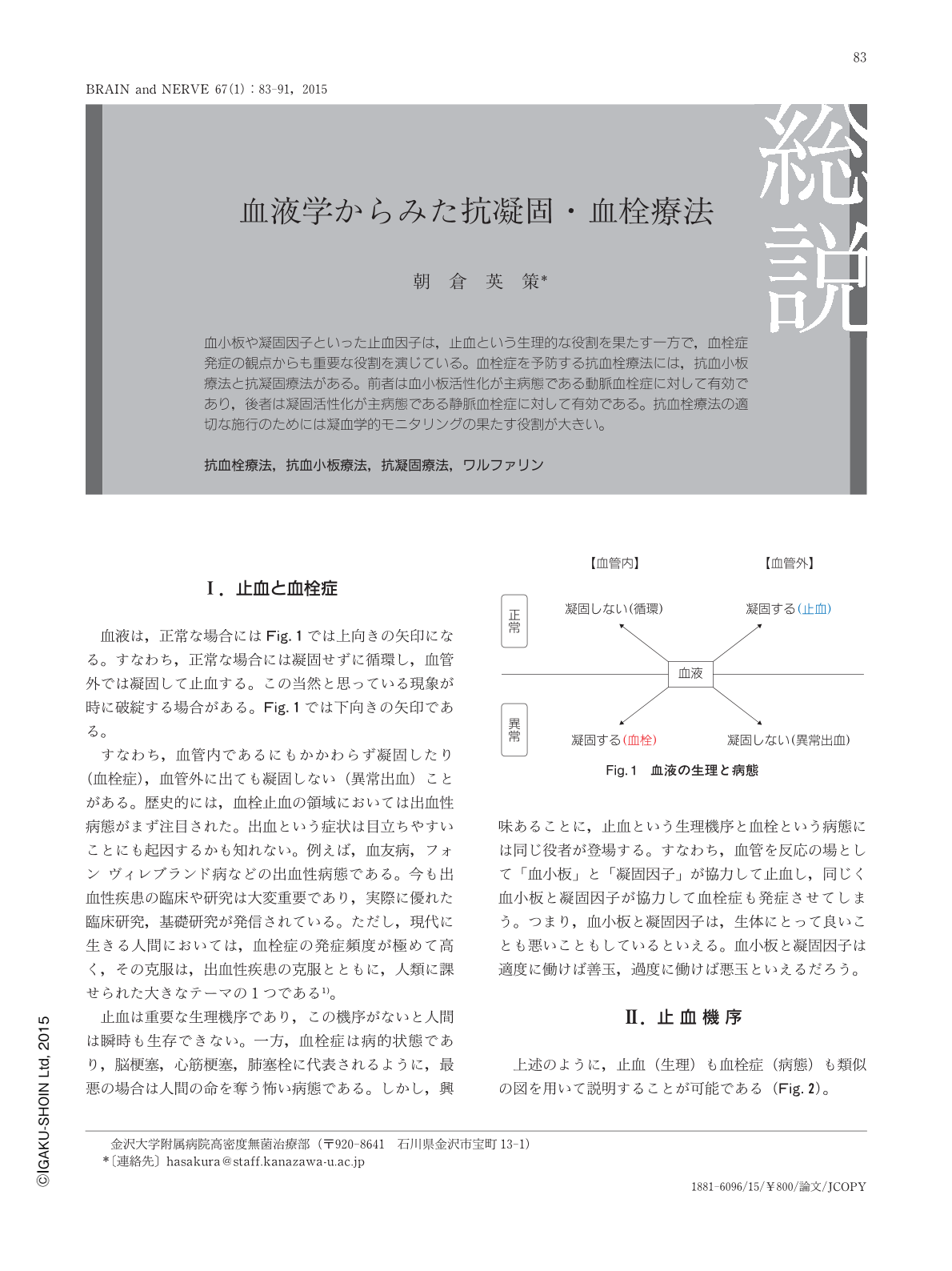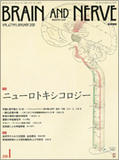Japanese
English
総説
血液学からみた抗凝固・血栓療法
An Antithrombotic Therapy from the Viewpoint of Hematology
朝倉 英策
1
Hidesaku Asakura
1
1金沢大学附属病院高密度無菌治療部
1Department of Internal Medicine (III), Kanazawa University School of Medicine
キーワード:
抗血栓療法
,
抗血小板療法
,
抗凝固療法
,
ワルファリン
,
antithrombotic therapy
,
antiplatelet therapy
,
anticoagulant therapy
,
warfarin
Keyword:
抗血栓療法
,
抗血小板療法
,
抗凝固療法
,
ワルファリン
,
antithrombotic therapy
,
antiplatelet therapy
,
anticoagulant therapy
,
warfarin
pp.83-91
発行日 2015年1月1日
Published Date 2015/1/1
DOI https://doi.org/10.11477/mf.1416200090
- 有料閲覧
- Abstract 文献概要
- 1ページ目 Look Inside
- 参考文献 Reference
血小板や凝固因子といった止血因子は,止血という生理的な役割を果たす一方で,血栓症発症の観点からも重要な役割を演じている。血栓症を予防する抗血栓療法には,抗血小板療法と抗凝固療法がある。前者は血小板活性化が主病態である動脈血栓症に対して有効であり,後者は凝固活性化が主病態である静脈血栓症に対して有効である。抗血栓療法の適切な施行のためには凝血学的モニタリングの果たす役割が大きい。
Abstract
Platelets and coagulation factors play an important role in the physiological process of hemostasis, and are also involved in thrombosis. Treatment strategies for thrombosis include antiplatelet and anticoagulant therapies. The former approach is effective for managing arterial thrombosis (caused by platelet activation), whereas the latter is used to treat venous thrombosis (caused by coagulation factor activation). Hemostatic monitoring is crucial for selecting the appropriate antithrombotic therapy.

Copyright © 2015, Igaku-Shoin Ltd. All rights reserved.


